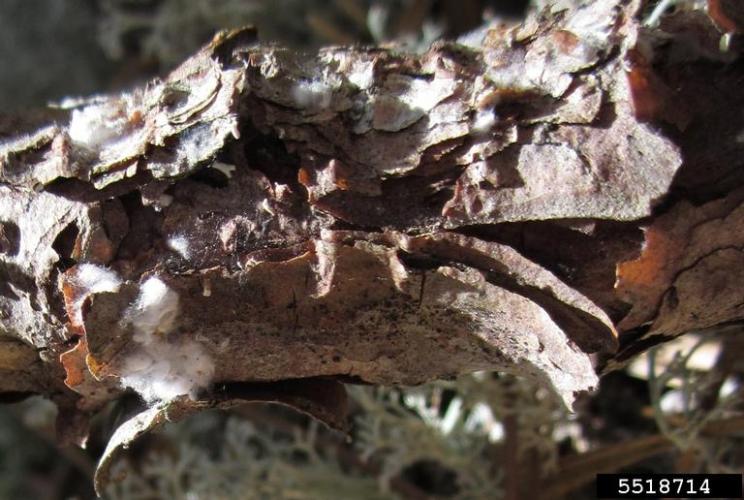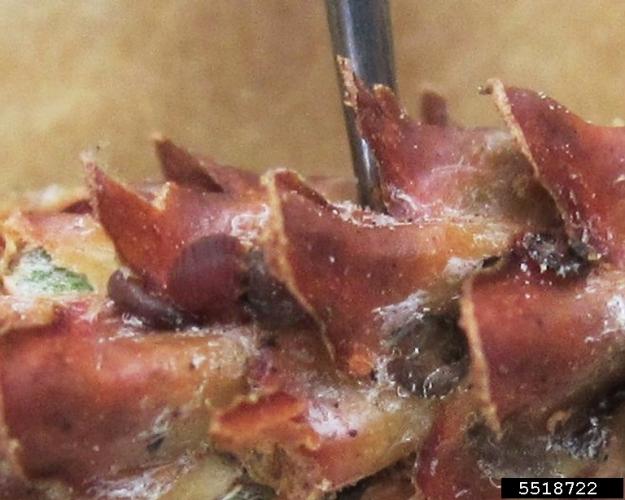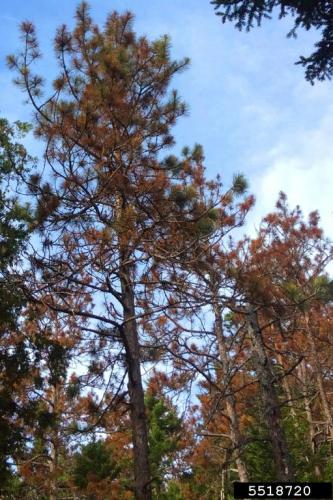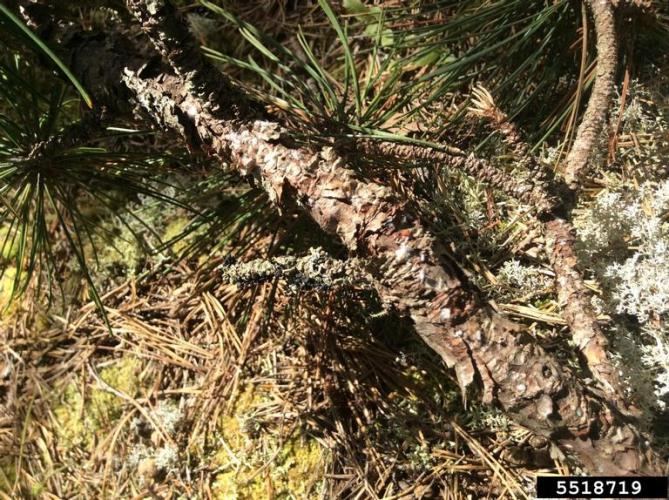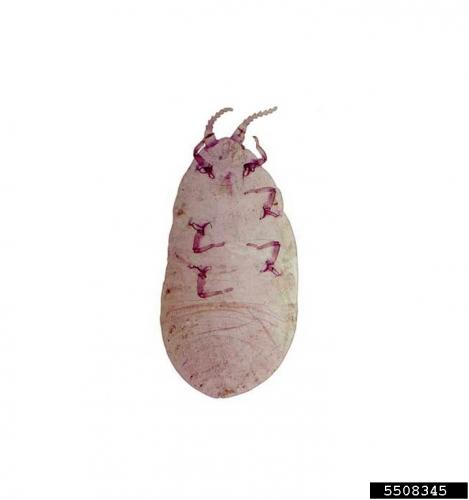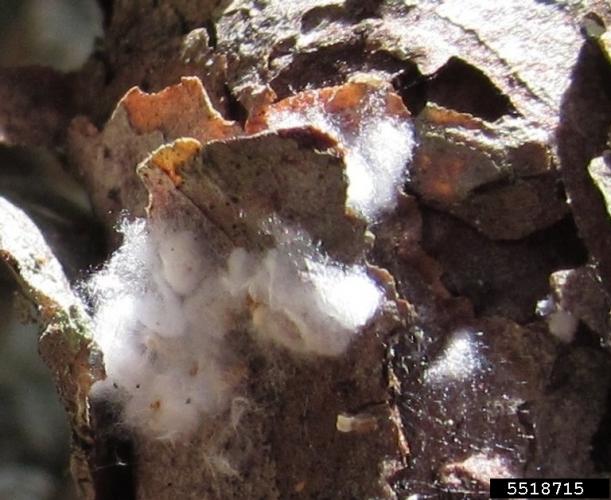Red Pine Scale
Identification
Red pine scale, now known more properly as pine bast scale, is an invasive insect that kills red pine trees in the United States. It is important not to confuse this with Matsucoccus macrocicatrices, a native pine bast scale that occurs on white pine trees.
Adult females are brick-red, wingless, soft-bodied insects with well-developed legs and antennae. They are approximately 1/16th”-3/16th” long, pear-shaped and coarsely wrinkled. Adult males are smaller (1/32nd”-1/16th”), two-winged, midge-like insects. Females deposit small, yellow eggs in a white, wooly ovisac. First-instar larvae resemble females, but are much smaller. Intermediate stage larvae are elliptical and lack legs and antennae. They resemble smooth, waxy pods, and have sparse tufts of white wool. Sub-adult males spin white, capsule-shaped, loosely woven cocoons. These are often visible on affected branches.
signs and symptoms
- Foliage color changes slowly from light green to yellow to red
- Masses of cottony white filaments become visible on the branches when infestations are heavy
- Weakened trees may also be attacked by bark beetles causing rapid tree mortality
See image slideshow above for signs and symptoms.
Biology
Origin
Pine bast scale was first detected in North America in 1946 in Easton, Connecticut. It is thought to have been introduced to the United States on exotic pine trees planted at the NY World's Fair in 1939. Pine bast scale is native to Japan. It is considered an invasive species in China, Korea, Europe, and the United States.
Habitat
Pine bast scale attacks several Asian pine tree species as well as the North American red pine (Pinus resinosa).
Life Cycle
Pine bast scale has two generations per year. Eggs are laid in May, with first-instar larvae appearing by June. The larvae settle down and feed, usually under a bark scale. They enter the intermediate stage by mid-July. Pre-adult males emerge in August and spin a loosely woven cocoon in which they transform into winged true adults. Adult females emerge from the intermediate stage, mate, and lay eggs from August to September. The crawlers that hatch from this overwintering generation settle down and become dormant. They enter the intermediate stage beginning in April and rapidly develop into adults.
Like many scales, the insect spreads in the crawler stage by wind and as a hitchhiker, so the spread is generally slow.
ecological threat
Research is ongoing, so it is premature to say that pine bast scale is the sole cause of red pine mortality in Vermont. Several shoot blight fungi are present in red pine stands and may play a role. Pine bast scale is cold sensitive, which may explain why it has been difficult to detect.
Vermont Distribution
Red pine scale is confirmed in Waterbury, Vermont (Nov. 2024). Red pine update (January 2025).
Citations
photo credit
Alessandra Rung, Scale Insects, USDA APHIS ITP, Bugwood.org
Allison Kanoti, Maine Forest Service, Bugwood.org
